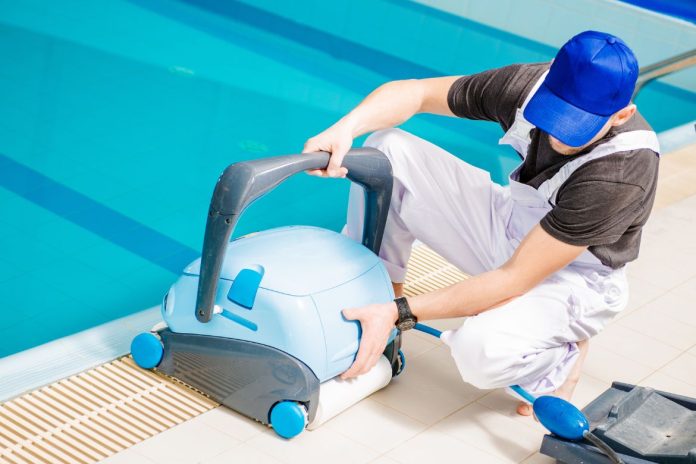Maintaining a large swimming pool presents distinct challenges that go beyond those of standard residential pools. The increased surface area and water volume demand more efficient cleaning solutions, as manual cleaning becomes impractical and time-consuming. Large pools typically accumulate more debris, require more extensive circulation, and need robust cleaning systems to maintain water quality and clarity.
The investment in the right pool cleaner becomes crucial not only for maintaining the pool’s aesthetic appeal but also for ensuring proper sanitation and reducing long-term maintenance costs. A suboptimal choice can result in inadequate cleaning, higher energy bills, and frequent repairs.
Essential Factors in Selecting a Pool Cleaner Pool Size and Configuration
When selecting a cleaner for a large pool, the first consideration must be whether the device can effectively cover the entire pool surface within a reasonable timeframe. Large pools often have complex shapes, deep ends, and various obstacles that the cleaner must navigate. The cleaning system should have sufficient cord length or hose reach to access all areas without restriction.
Cleaning Capability and Efficiency
The cleaning mechanism must be powerful enough to handle the increased debris load typical in larger pools. This includes not only leaves and dirt but also fine particles that can accumulate in greater quantities across the expanded surface area. The cleaner should demonstrate consistent performance in both shallow and deep sections.
Energy Consumption
Large pools already incur significant energy costs for heating and circulation. The selected pool cleaner should operate efficiently to avoid substantially increasing the pool’s energy footprint. Modern energy-efficient models may cost more initially but often provide considerable savings over time.
Types of Pool Cleaners: A Detailed Analysis Robotic Pool Cleaners
Robotic cleaners represent the most advanced solution for large pool maintenance. These self-contained units operate independently of the pool’s filtration system and typically offer the most comprehensive cleaning capabilities.
Key advantages for large pools:
- Independent operation reduces strain on the main pool system
- Advanced navigation systems ensure complete pool coverage
- Multiple filtration levels capture both large debris and fine particles
- Programmable cleaning schedules for automated maintenance
However, robotic cleaners require a higher initial investment and may need occasional parts replacement. For large pools, the investment often justifies itself through reduced manual labor and improved cleaning efficiency.
Pressure-Side Cleaners
Pressure-side cleaners utilize the pool’s return water flow to power their movement and cleaning functions. These systems excel in collecting larger debris and are particularly effective in pools surrounded by vegetation.
For large pools, pressure cleaners offer:
- Robust debris collection capacity
- Reliable performance in various pool configurations
- Lower initial cost compared to robotic cleaners
- Generally good durability and longevity
The main drawback is their reliance on the pool’s pump system, which may require a booster pump for optimal performance in larger pools.
Suction-Side Cleaners
While suction cleaners represent the most economical option, their effectiveness in large pools can be limited. These devices connect to the pool’s skimmer or dedicated suction line and use the suction force for movement and debris collection.
Pool Cleaner Comparison: Performance Analysis
When conducting a detailed pool cleaner comparison, several key metrics emerge as crucial for large pool applications. The market offers numerous options, from entry-level suction cleaners to premium robotic models like the dolphin premier vs sigma, which represent the higher end of the performance spectrum.
Coverage and Navigation
Modern robotic cleaners typically offer the most sophisticated navigation systems, using algorithms to ensure complete pool coverage. Pressure and suction cleaners rely on more mechanical movement patterns, which may require longer operating times to achieve similar coverage in large pools.
Maintenance Requirements
Regular maintenance needs vary significantly between cleaner types:
- Robotic cleaners: Weekly filter cleaning, occasional part replacement
- Pressure cleaners: Debris bag emptying, wear-and-tear maintenance
- Suction cleaners: Regular inspection of moving parts, debris removal
Cost Considerations Initial Investment
The initial cost varies substantially between cleaner types, with robotic cleaners typically representing the highest upfront investment. However, for large pools, the efficiency gains often justify the higher initial expense.
Operating Costs
Operating costs include energy consumption, replacement parts, and potential repairs. Robotic cleaners generally offer the lowest operating costs despite their higher purchase price, while pressure cleaners with booster pumps tend to have higher energy requirements.
Long-term Value
When evaluating long-term value, consider:
- Energy efficiency over time
- Durability and expected lifespan
- Availability and cost of replacement parts
- Warranty coverage and manufacturer support
Making the Final Decision
For large pools, robotic cleaners typically offer the most comprehensive solution despite their higher initial cost. Their advanced features, efficient operation, and minimal maintenance requirements make them particularly suitable for extensive water surfaces.
However, pressure-side cleaners present a viable alternative, especially in areas with heavy debris loads. Their robust construction and reliable performance can effectively maintain large pools, though they may require more frequent maintenance and higher operating costs.
Suction-side cleaners, while economical, generally prove less practical for large pools due to their limited efficiency and increased dependence on the pool’s main system.
Conclusion
Selecting the appropriate pool cleaner for a large pool requires careful consideration of multiple factors, including cleaning efficiency, operating costs, and maintenance requirements. While the initial investment in a high-quality cleaner may seem substantial, the long-term benefits of proper pool maintenance justify the expense.
Consider your specific needs, budget constraints, and pool characteristics when making the final decision. Remember that the most expensive option isn’t always the best choice – the ideal pool cleaner is one that effectively maintains your pool while fitting within your maintenance routine and budget constraints.








